Implementing a condition monitoring system offers key benefits that help improve performance, reduce costs, and protect your equipment.
- Reduce Equipment Failures : Spot issues early, prevent breakdowns.
- Maximize Uptime : Schedule maintenance at the right time using real-time data—minimizing disruption and keeping production on track.
- Make Maintenance More Efficient : Cut unnecessary checks and part replacements. Do maintenance only when needed, saving time, labor, and costs.
- Reduces Unnecessary Maintenance : Know your machines inside and out.
- Real-time data and performance trends give a clear picture of asset health, helping you predict issues and improve long-term performance.
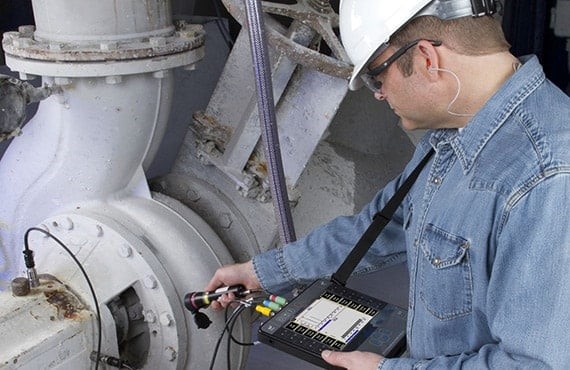
Traditional manual checks are being replaced by smarter, automated solutions. With the rise of affordable sensors, automated systems, and Big Data analytics, continuous online monitoring gives you real-time insight into the health of your critical assets—helping you prevent failures and make better decisions.
Predictive maintenance is not only the most cost-effective—it also reduces the risk of costly and dangerous failures. Condition monitoring helps you stay ahead of problems, extend equipment life, and improve safety across your operations.
A rugged, all-in-one industrial controller with real-time processing, vision/motion support, and industrial I/O. Runs LabVIEW Real-Time, supports multirate control, data logging, and seamless communication—ideal for compact, high-performance monitoring and control.

C Series Sound and Vibration Input Modules interface with microphones and accelerometers to acquire acoustic and vibration signals. Use these modules for audio test; machine condition monitoring; and noise, vibration, and harshness (NVH) applications.
• NI-9232 – 3-Channel, 102.4 kS/s/channel, ±30 V, C Series Sound and Vibration Input Module
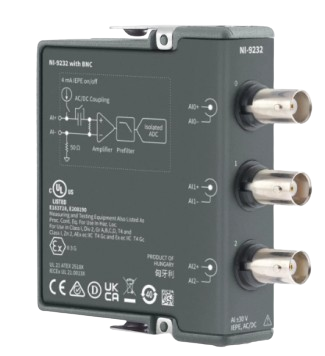
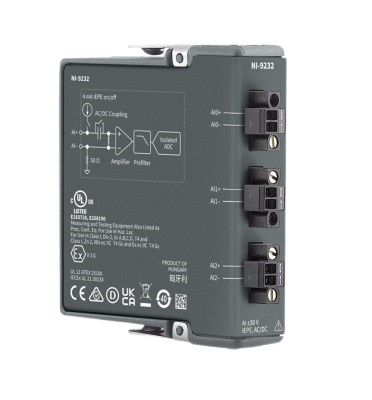
• NI-9234 – 4-Channel, 51.2 kS/s/channel, ±5 V, C Series Sound and Vibration Input Module
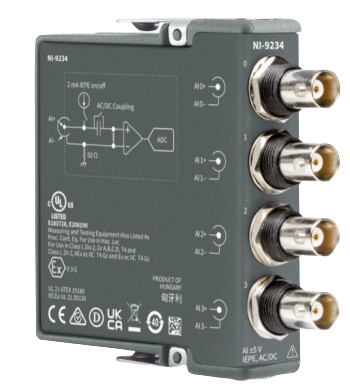
C Series Temperature Input Modules measure signals from sensors such as thermocouples and resistance temperature detectors (RTDs). You can use these products to acquire, condition, and digitize signals in varied temperature ranges and environments.
•NI-9213 - 16 channel, up to 75 S/s per channel, ±78 mV C Series Temperature Input Module
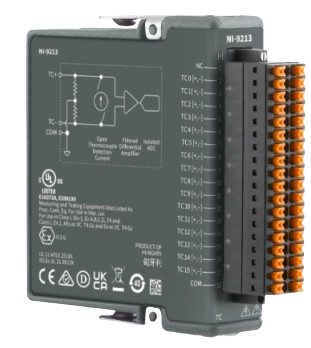
•NI-9216 - 8-Channel, 400 S/s Aggregate, 0 Ω to 400 Ω, PT100 RTD C Series Temperature Input Module
Vibration Measurement using Accelerometer:
An accelerometer or ceramic piezoelectric sensor is commonly used to measure vibration. In Condition-Based Maintenance (CBM), accelerometers—especially those using piezoelectric crystals—are essential for detecting equipment vibration. These sensors work by sensing movement from the machine, which causes a small internal weight to press on a special crystal. This stress produces an electrical signal that matches the level of vibration. By analyzing this signal, maintenance teams can monitor machine health and detect issues early, helping to prevent unexpected breakdowns.
- Piezoelectric Accelerometers
- Single Axis Accelerometers
- Tri-axial Piezoelectric Accelerometers
Short-wave length infrared camera for precise, non-contact temperature measurement of hot metals and ceramics. Features motorized focus, Ethernet/USB connectivity, and easy integration into industrial systems.
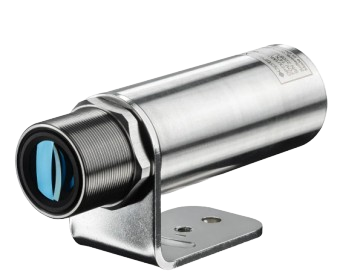
- LabVIEW: Graphical programming environment for test, monitoring, and control with intuitive design and instrument connectivity.
- LabVIEW Real-Time Module: Enables reliable, real-time system deployment with precise timing on dedicated hardware.
- LabVIEW FPGA Module: Simplifies FPGA programming for custom I/O, control, and simulation using LabVIEW logic and IP libraries.
- LabVIEW Sound and Vibration Toolkit: Tools for audio analysis, frequency response, and transient analysis with IEC-compliant solutions.
- LabVIEW Vision Software (VAS & VDM): Supports image acquisition and processing from thermal and industrial cameras; ideal for machine vision and inspection tasks.
